Choosing the right stereo receiver can transform your audio experience, bringing your music to life with clarity and power. Whether you're building a new sound system or upgrading an existing one, finding a receiver that perfectly matches your needs and speakers is crucial. This guide cuts through the complexity, offering clear insights into the essential factors and differentiating features that define top-performing stereo receivers. We'll help you navigate the options, understand what truly matters, and make a confident decision to elevate your home audio setup.
The market offers a wide range of stereo receivers, each with unique strengths. To ensure you select a model that delivers exceptional sound and integrates seamlessly into your lifestyle, it’s important to understand the core components and capabilities. This article will walk you through the most critical aspects, from raw power to modern connectivity, ensuring you have all the information needed to make an informed choice.
Essential Considerations for Stereo Receivers
When evaluating stereo receivers, several key factors directly influence performance, compatibility, and overall satisfaction. Focusing on these areas will help you narrow down your choices and find a receiver that meets your specific audio requirements.
Amplifier Power

Amplifier power, measured in watts per channel (W/Ch), dictates how effectively a receiver can drive your speakers. Higher wattage generally translates to louder, more dynamic sound and the ability to power larger, less sensitive speakers without distortion. For most listeners and larger rooms, a receiver offering around 100W/8 Ohm or 120W/6 Ohm provides ample power.
Adequate power ensures your speakers perform at their best, producing clear sound even at higher volumes.
Inadequate power can lead to audio distortion, especially if you have larger speakers or prefer louder listening levels.
For smaller spaces, a receiver with less power can sometimes offer better sound quality because distortion (THD) often increases at full power.
While more power often means better sound and versatility, it can also lead to higher costs and increased heat generation. Always ensure the receiver's power output is well-matched to your speakers' impedance to prevent overheating and ensure optimal performance.
Connectivity Options
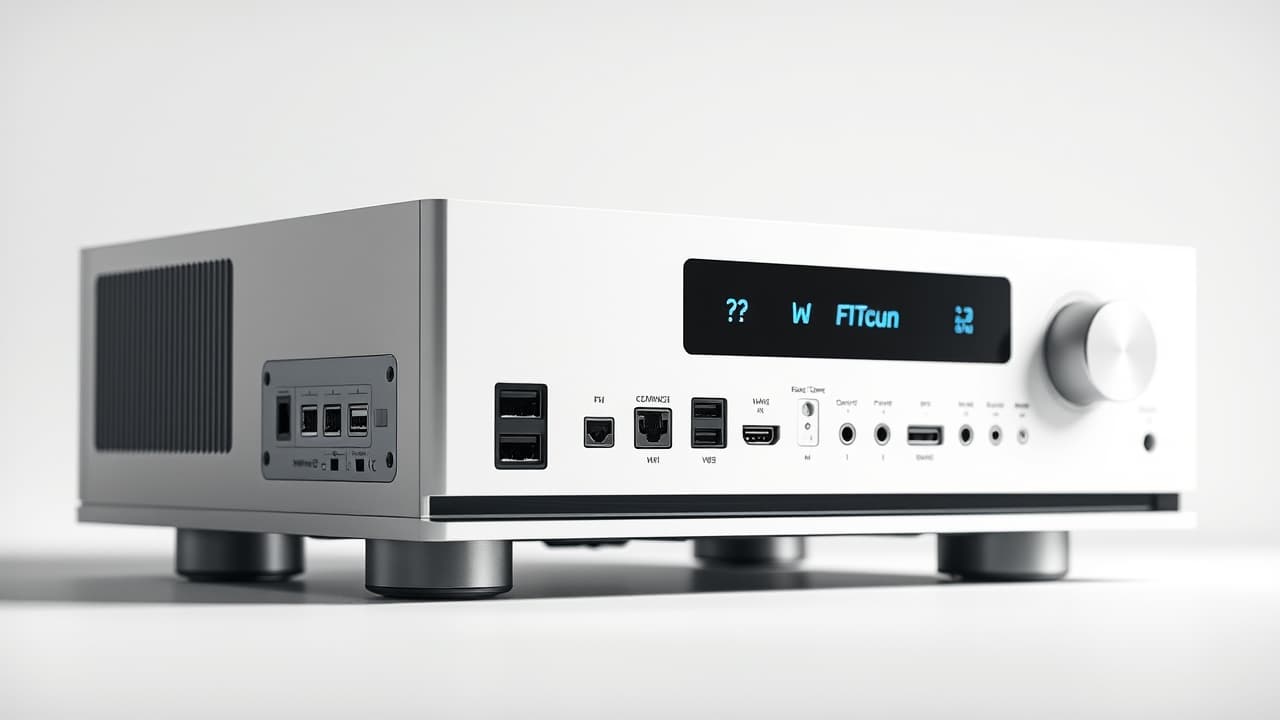
The array of physical ports on a stereo receiver determines how many and what types of audio sources you can connect. A diverse selection of inputs and outputs is crucial for compatibility with your current equipment and for future expansion. Look for options like HDMI, optical, USB, and traditional analog inputs.
Multiple inputs allow you to connect various devices such as CD players, streaming boxes, and gaming consoles simultaneously.
A dedicated phono input is essential for turntable owners, providing the necessary amplification and noise reduction for vinyl playback.
Lack of HDMI inputs can limit support for modern video devices and high-quality audio formats from your TV, making the receiver less versatile for integrated home entertainment.
Receivers with extensive digital and analog connectivity, including HDMI for video pass-through, offer the most flexibility. However, more advanced connectivity often comes with a higher price point. Consider your current and anticipated audio sources to choose a receiver with the right balance of inputs.
Wireless Connectivity

Modern audio consumption heavily relies on wireless streaming, making wireless connectivity a crucial factor for many users. Features like Wi-Fi and Bluetooth enable seamless streaming from various sources and integration into smart home ecosystems.
Wi-Fi connectivity allows access to popular streaming services and often supports multi-room audio systems like HEOS, MusicCast, or Apple AirPlay 2.
Bluetooth enables convenient wireless streaming from mobile devices and can connect to wireless headphones or speakers.
The absence of Wi-Fi limits your access to streaming services and advanced multi-room audio features, while basic Bluetooth might suffer from interference or dropouts.
For the best wireless experience, look for receivers with Wi-Fi, AirPlay 2, and a robust Bluetooth version (e.g., Bluetooth 5.0 with AptX for higher quality streaming). Keep in mind that lossless audio typically requires Wi-Fi or wired connections for optimal fidelity, as most Bluetooth devices compress audio.
Sound Quality
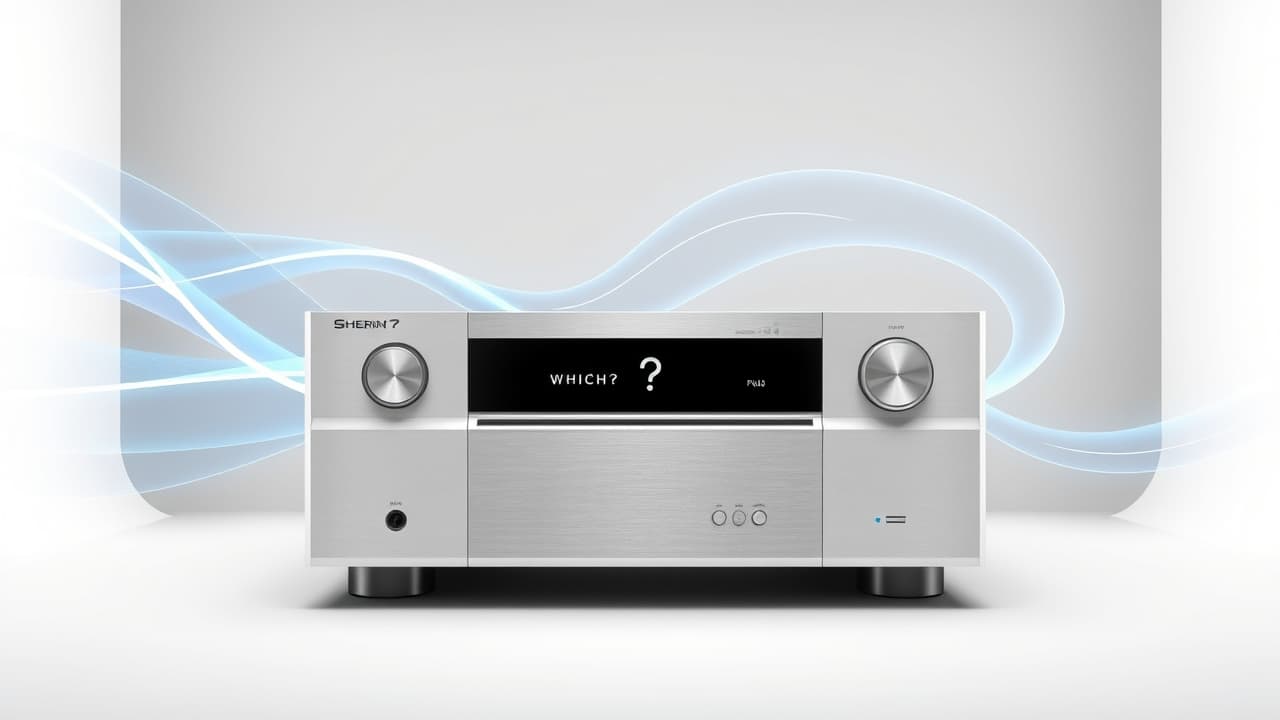
Ultimately, the primary goal of a stereo receiver is to deliver exceptional sound. Sound quality encompasses clarity, depth, warmth, and minimal distortion. It's a top priority for most audio enthusiasts, directly impacting the listening experience.
High-fidelity components and advanced amplification technologies ensure crisp, immersive, and detailed audio reproduction.
Low Total Harmonic Distortion (THD) and a high Signal-to-Noise Ratio (S/N Ratio) are indicators of a clean audio signal, preserving the original sound's integrity.
Poor sound quality, often characterized by noticeable distortion at higher volumes or a 'cold' sound, can significantly detract from your enjoyment.
While objective measurements like THD and frequency response provide technical insights, subjective listening tests are also crucial. Many higher-priced models often boast lower impedance, broader frequency ranges, and less distortion, contributing to a warmer, more realistic sound. For small apartments, sometimes less power can mean more quality as THD suffers at full power.
Build Quality & Reliability
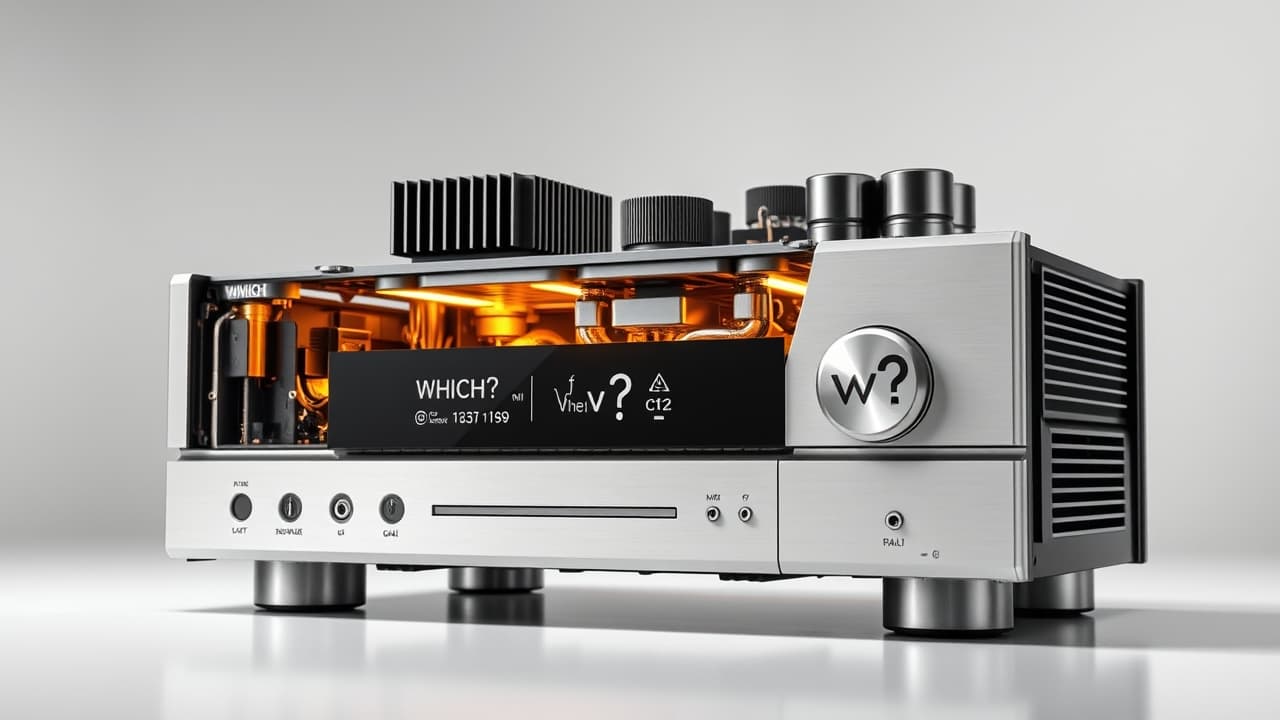
A stereo receiver is an investment, and its longevity depends heavily on its build quality and reliability. Durable construction and high-quality internal components ensure consistent performance and minimize the need for frequent repairs or replacements. This factor contributes significantly to long-term satisfaction and value.
Robust chassis, quality materials, and precision engineering contribute to a receiver that can withstand years of use.
Effective ventilation and heat management are critical to prevent overheating, a common cause of electronic failures, especially with low-impedance speakers or extended use.
Brands with a strong reputation for reliability often use superior components, leading to fewer issues and better customer experience.
While higher-priced units often feature better build quality, investing in a reputable brand known for durability can save you time and money in the long run. Look for indicators like thick aluminum casework, oversized transformers, and reinforced chassis, which are hallmarks of lasting quality.
Price & Value
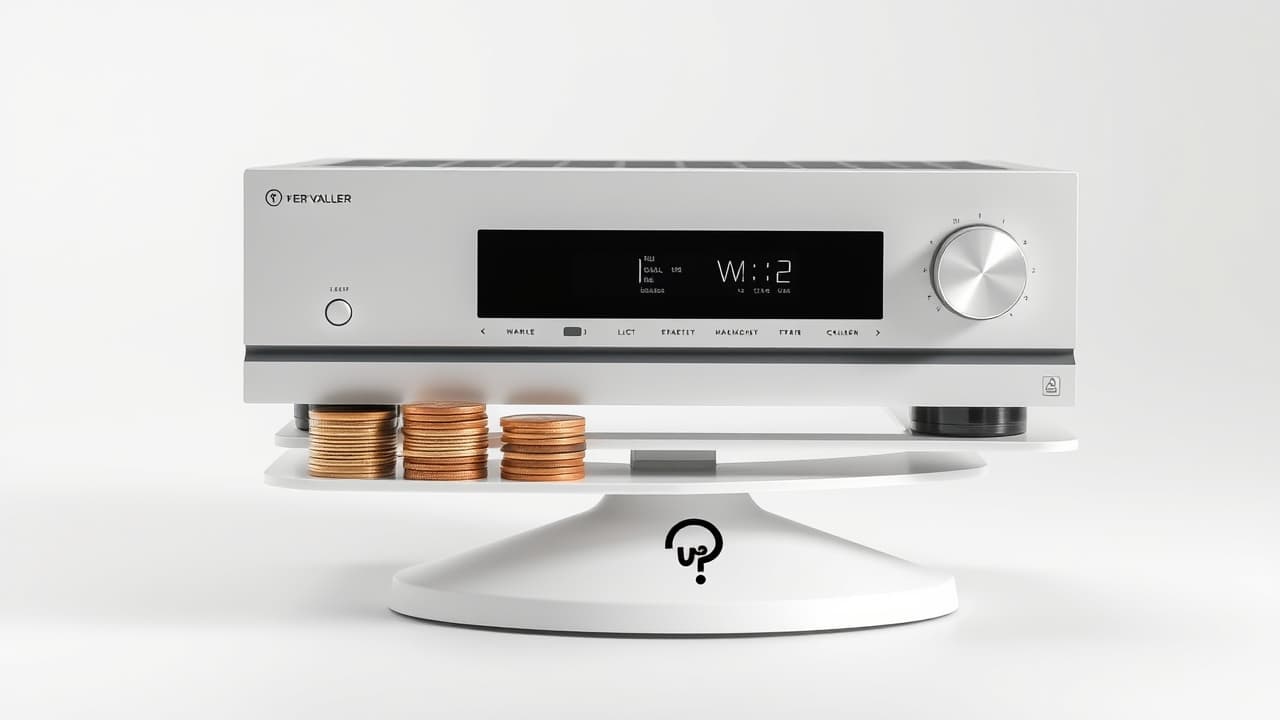
Price is always a fundamental consideration, but true value lies in the balance between cost, features, performance, and durability. Consumers often make trade-offs, prioritizing certain aspects over others based on their budget and needs. A price range of $400-$500 often yields a great stereo receiver that strikes a good balance.
Affordable options can provide good basic functionality and sound quality, making quality audio accessible.
More expensive receivers typically offer greater amplification power, enhanced performance, superior build quality, and advanced features like comprehensive wireless connectivity.
Be wary of extremely low-priced products from unknown brands, as they may lack essential features or suffer from poor reliability, leading to frustration and potential financial loss.
Consider your budget, but also think about the long-term value. Investing a bit more in a higher-quality receiver from a reputable brand can provide years of reliable performance and superior sound, ultimately offering better value than frequent replacements of cheaper, less durable units.
Beyond the Basics: Enhancing Your Stereo Receiver Experience
While the core factors are essential, certain features can significantly enhance the usability, versatility, and overall enjoyment of your stereo receiver. These differentiating capabilities cater to specific needs and preferences, moving beyond basic audio reproduction to offer a more integrated and personalized listening experience.
User Interface & Controls
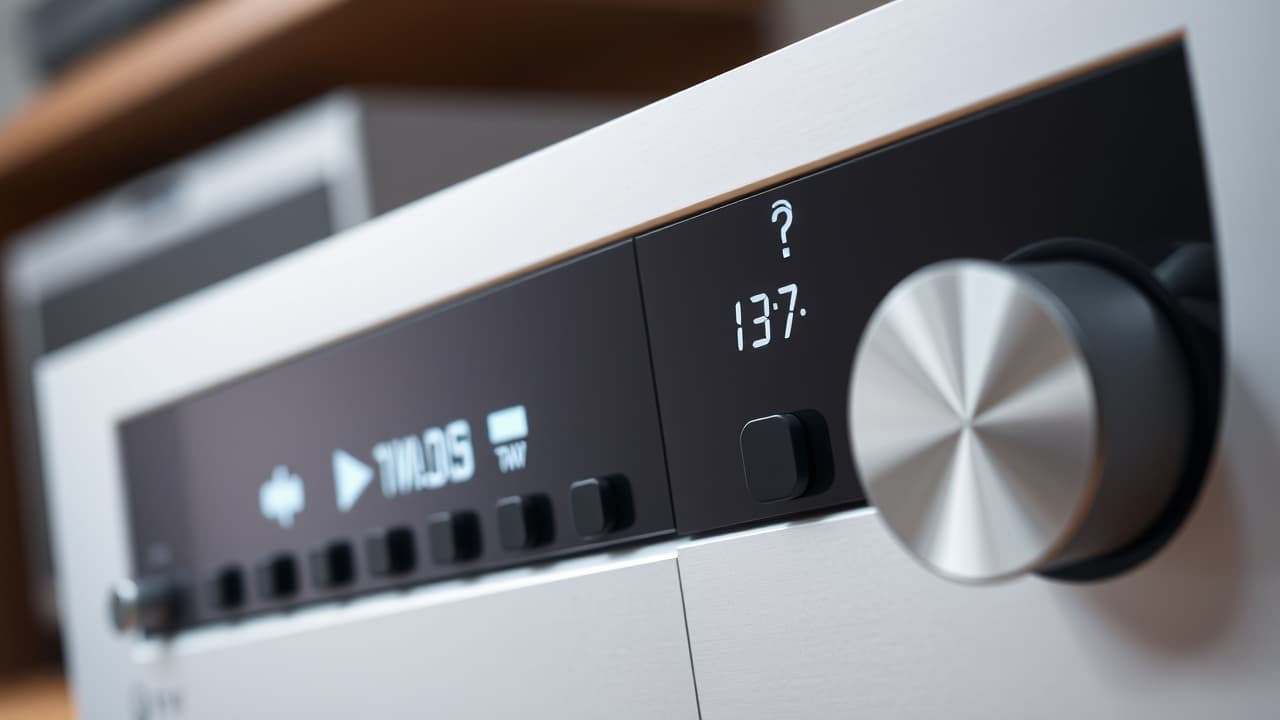
An intuitive user interface and responsive controls are vital for a smooth daily experience. How easy it is to navigate menus, switch sources, and adjust settings can significantly impact your satisfaction with a receiver. This includes both physical buttons and any accompanying mobile apps.
Clear displays and well-labeled buttons simplify operation, especially for those less tech-savvy.
Award-winning on-screen setup assistants can make initial configuration straightforward, guiding you through speaker connections and basic settings.
An unimpressive user interface or a lagging control app can be a source of frustration, even if the sound quality is good. Look for models praised for their ease of use.
While not directly impacting sound, a well-designed interface ensures you can easily access and enjoy all your receiver's capabilities without hassle.
Multi-room Audio
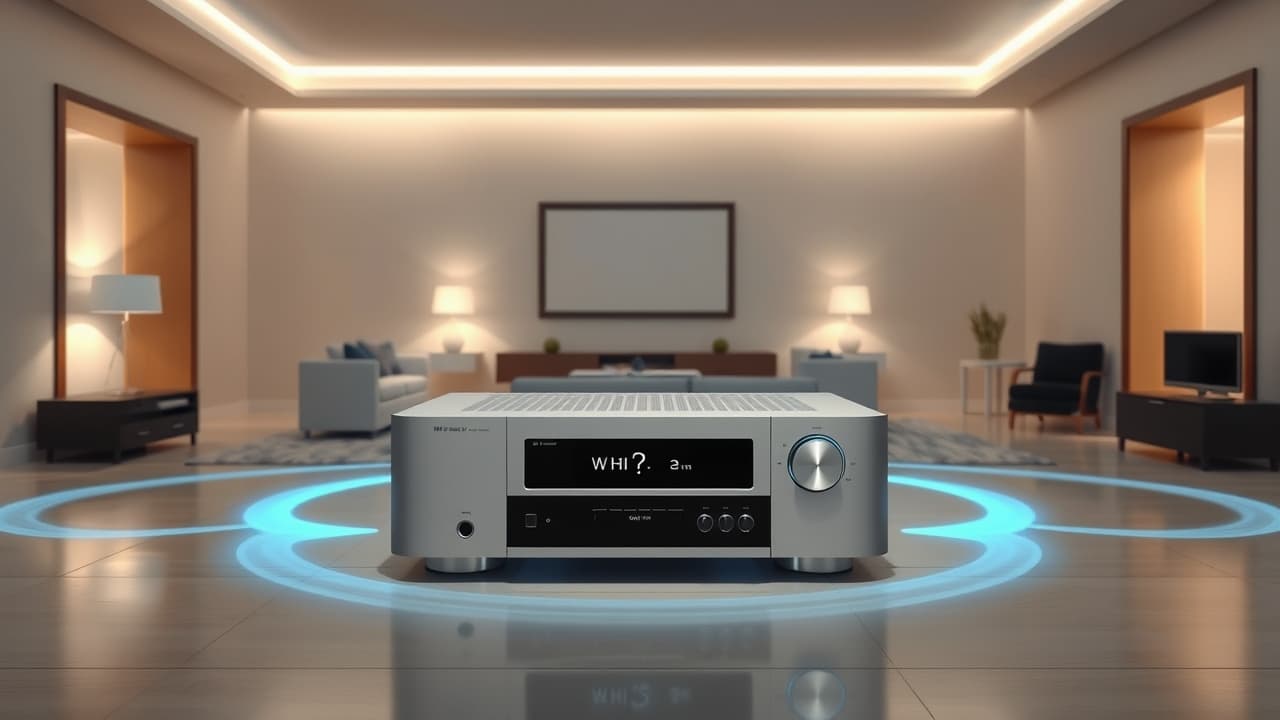
For those who want to extend their audio experience beyond a single listening area, multi-room audio capabilities are a valuable feature. This allows you to play music in different rooms, sometimes from different sources, enhancing the versatility of your home audio system.
Wireless multi-room systems like HEOS, MusicCast, AirPlay 2, or Chromecast built-in provide seamless audio distribution across multiple zones using your home network.
Some receivers offer A/B speaker outputs, allowing for basic wired multi-room audio by connecting two sets of speakers that can be switched independently.
The absence of multi-room features limits your audio enjoyment to a single listening area, which might be a drawback for larger homes or those who entertain frequently.
Multi-room audio features, especially advanced wireless ecosystems, are typically found in more modern or higher-end stereo receivers, reflecting a growing consumer desire for whole-home audio solutions.
Video Pass-through
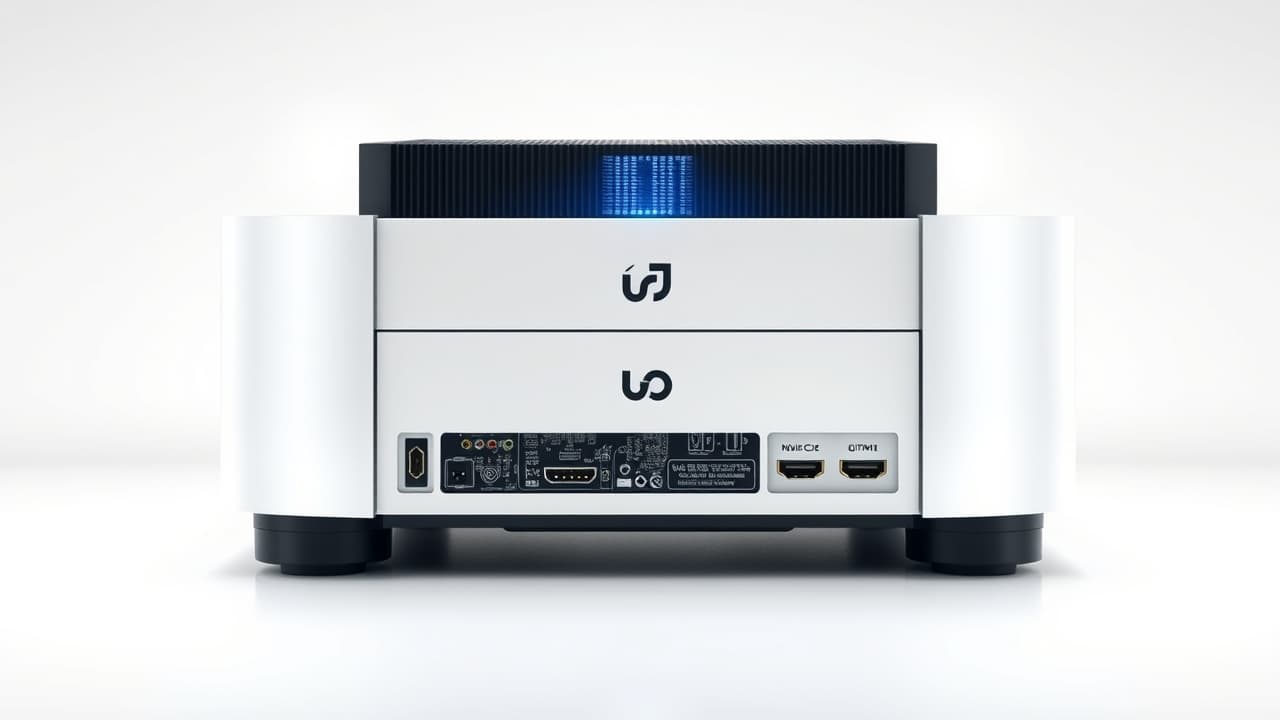
While primarily a feature of AV receivers, some modern stereo receivers include HDMI inputs with video pass-through capabilities. This allows the receiver to pass video signals from your source devices (like a Blu-ray player or gaming console) to your TV, often supporting advanced formats.
Support for 4K/60Hz, HDCP 2.3, HDR10, HLG, and Dolby Vision ensures compatibility with the latest high-quality video content.
Advanced gaming features like Variable Refresh Rate (VRR) and Auto Low Latency Mode (ALLM) can enhance the gaming experience if supported.
The absence of HDMI inputs means the receiver cannot act as a central hub for video, requiring separate connections to your TV and limiting integration.
Stereo receivers with video pass-through are ideal for those seeking a more integrated audio-video solution without the full complexity of an AV receiver. However, these features often come at a higher price point and blur the line between dedicated stereo and home theater components.
Audio Formats & Decoding

For audiophiles, a receiver's ability to support and decode various audio formats, especially high-resolution audio, is paramount. This capability directly impacts the fidelity of digital playback and ensures you can enjoy your music in its purest form.
Support for Hi-Res audio formats like FLAC, WAV (up to 192 kHz/24 bit), Apple Lossless (ALAC), and DSD (up to 5.6 MHz) provides superior sound quality.
High-quality Digital-to-Analog Converters (DACs), such as those from AKM or SABER, are crucial for pristine conversion of digital signals to analog sound.
Limited format support or a basic DAC can lead to a degradation of digital audio signals, preventing you from experiencing the full potential of your high-resolution music library.
If you plan to stream or play high-resolution digital music, prioritize receivers that explicitly mention support for these formats and feature high-quality DACs. This ensures your digital audio sources are reproduced with maximum fidelity.
Tuner (AM/FM)
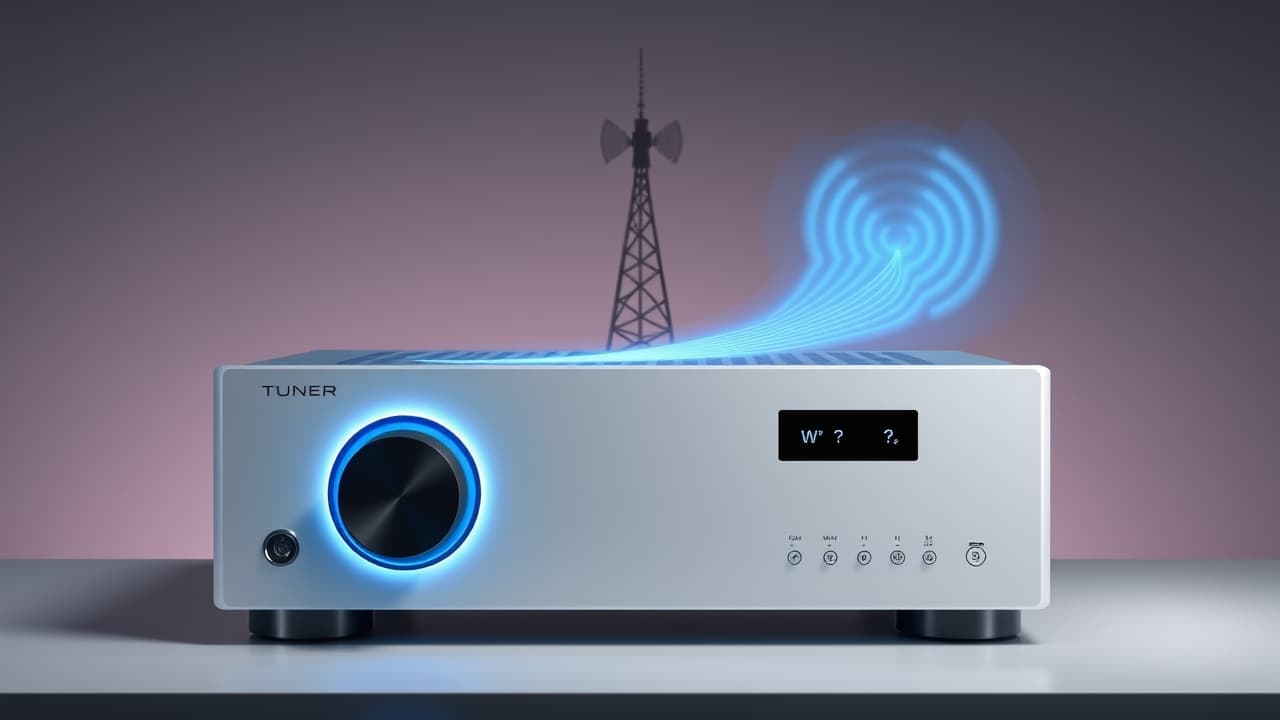
While digital streaming has become prevalent, traditional AM/FM radio tuners remain a desired feature for many consumers. A built-in tuner allows direct access to local radio broadcasts, providing a familiar and often distraction-free listening experience.
An integrated AM/FM tuner with station presets offers convenient access to your favorite radio stations without needing additional devices.
Radio continues to be a widely consumed audio format globally, especially for certain demographics, making this feature relevant for a significant segment of users.
If a receiver lacks an AM/FM tuner, you'll need an external device or rely solely on streaming services for radio content.
For radio enthusiasts, ensuring your stereo receiver includes a robust AM/FM tuner is a straightforward way to guarantee access to traditional broadcasts. Many models offer this feature, often with a generous number of presets for easy station recall.
Speaker Outputs

The number and type of speaker outputs on a stereo receiver are fundamental for configuring your sound system. These outputs determine how many speakers you can connect and whether you can enhance your bass with a dedicated subwoofer or set up audio in multiple zones.
Multiple amplified outputs (A/B switching) allow you to connect two sets of speakers, useful for different listening preferences or basic multi-room audio in two zones.
Dedicated subwoofer outputs provide enhanced bass and enable a 2.1 or 2.2 channel setup, significantly improving the low-frequency impact of your audio.
Limited speaker outputs restrict your system configuration options, potentially preventing you from adding a subwoofer or a second pair of speakers for different listening environments.
For larger rooms or those desiring more immersive sound, consider a receiver with A/B speaker switching and at least one subwoofer output. Entry-level receivers typically offer two amplified outputs, while more capable models provide greater flexibility for system expansion.
How to Choose Stereo Receivers for Your Audio System
Selecting the ideal stereo receiver is a pivotal step in crafting an exceptional home audio experience. This guide simplifies the decision-making process, helping you navigate the diverse market to find a stereo receiver that aligns perfectly with your listening habits, existing equipment, and future aspirations. By focusing on key factors like amplifier power, connectivity, and sound quality, you can confidently choose a model that elevates your music to new heights.
Your journey to the perfect sound begins with understanding your specific needs. Consider the size of your listening space, the type of speakers you own or plan to purchase, and how you primarily access your music. Whether you're a vinyl enthusiast, a streaming devotee, or someone who enjoys both, there's a stereo receiver designed to meet your demands and deliver the immersive audio you seek from your stereo receivers.
Dedicated Audio Quality
This category is for listeners who prioritize uncompromised sound quality, robust amplification, and traditional hi-fi connections above all else. You appreciate the subtle nuances in music and prefer a clean, powerful delivery, often with a focus on analog sources like turntables. Advanced streaming features or video pass-through are secondary to the core audio performance of your stereo receiver.
For these users, sound quality with minimal distortion and a high signal-to-noise ratio is paramount. Amplifier power should be ample to drive your chosen speakers effectively. Build quality and a dedicated phono input are also critical for a lasting and authentic listening experience from your stereo receiver.
Recommended
Cambridge Audio AXR100 100-Watt Stereo Receiver with Bluetooth
The AXR100 is a stereo receiver featuring a Class A/B amplifier that delivers 100 Watts per channel into 8 Ohms. Its Wolfson WM8740SEDS DAC and low Total Harmonic Distortion (<0.01% @ 1kHz) are designed for clear audio reproduction. The robust construction includes a Lunar Grey fascia and brushed aluminum front panel, contributing to durability and effective heat dissipation.
Amplifier Power: 100 Watts per channel into 8 Ohms
Sound Quality: THD <0.01% @ 1kHz, SNR >90dB, Frequency Response 5Hz – 50kHz
Connectivity Options: Built-in Phono Stage (MM), 2 Optical, 1 Coaxial, 4 RCA inputs, Subwoofer Out, A/B speaker outputs
Build Quality: 8.1kg weight, black steel cabinet, brushed aluminum front panel
Digital Streaming Hub
This cluster is for users who embrace digital music and demand seamless wireless streaming, multi-room audio capabilities, and integration with smart home ecosystems. Convenience, a wide array of streaming services, and control via mobile apps are key priorities, allowing you to enjoy music throughout your home effortlessly with your stereo receiver.
Critical factors include robust wireless connectivity (Wi-Fi, AirPlay 2, Bluetooth), a comprehensive multi-room audio platform, and support for various audio formats, including high-resolution audio. An intuitive user interface and controls, especially via a dedicated app, are also highly valued for these stereo receivers.
Recommended
Marantz M-CR612 Network CD Receiver (Melody X)
The Marantz M-CR612 is an all-in-one system integrating a CD player, network streaming, and a stereo amplifier. It features HEOS multi-room audio, AirPlay 2, Bluetooth, and supports high-resolution audio playback (WAV/FLAC/ALAC up to 24-bit/192kHz and DSD 2.8/5.6MHz). The unit includes a DAB+/FM tuner and offers smart control features like voice control compatibility.
Connectivity: Built-in Wi-Fi (2.4/5GHz), Bluetooth v3.0+EDR, Apple AirPlay 2, HEOS Multiroom, Ethernet
Audio Formats: WAV/FLAC/ALAC up to 192kHz/24-bit; DSD 2.8/5.6MHz; MP3/WMA/AAC, with gapless playback
Integrated Features: CD Player, DAB+/FM/AM Tuner, Spotify, Tidal, TuneIn, Deezer, Amazon Prime Music, Internet Radio
User Interface: Low-noise OLED three-line display, voice control compatibility (Alexa, Google Assistant, Siri)
Home Theater Integration
This cluster is for users who want to combine quality stereo sound with modern video connectivity, including 4K/8K pass-through and advanced gaming features, without the complexity of a full multi-channel AV receiver. You seek a central hub for both your audio and video sources, ensuring seamless integration with your TV and gaming consoles using a dedicated stereo receiver.
Key considerations include robust video pass-through capabilities with multiple HDMI inputs supporting 8K/4K, VRR, and ALLM. Adequate amplifier power and high sound quality are also important for an immersive experience from these stereo receivers.
Recommended
Marantz STEREO 70s Stereo A/V Receiver
The Marantz STEREO 70s is a slimline stereo receiver that provides 70W per channel (8 Ohms) and features Marantz's HDAM circuits for audio reproduction. It includes six HDMI inputs (three supporting 8K resolution) with ARC/eARC, 8K/60Hz & 4K/120Hz pass-through, VRR, ALLM, and Dolby Vision HDR. Comprehensive streaming is available via HEOS Built-in, AirPlay 2, and Bluetooth.
Amplifier Power: 70W per channel (8 Ohms), 120W per channel (4 Ohms)
HDMI Connectivity: 6 Inputs (3 supporting 8K), 1 Output (ARC/eARC)
Video Capabilities: 8K/60Hz & 4K/120Hz Pass-through, 8K Upscaling, VRR, ALLM, Dolby Vision HDR
Wireless Connectivity: Wi-Fi, Bluetooth (with output option), AirPlay 2, HEOS Built-in
Audio Inputs: Phono (MM), 3x RCA Analog, 1x Optical Digital, 1x Coaxial Digital, 1x USB-A
Budget-Friendly Options
This cluster caters to budget-conscious buyers seeking reliable stereo sound and essential connectivity without a high price tag. You need a straightforward stereo receiver that delivers clear audio and basic wireless capabilities, prioritizing affordability and core functionality over advanced features or high-end components.
The primary factors here are price and value, ensuring you get the most amplifier power and decent sound quality for your investment. Basic connectivity options like Bluetooth and analog inputs, along with solid build quality, are crucial for a satisfying entry-level experience with these stereo receivers.
Recommended
Yamaha R-S202BL Stereo Receiver
The Yamaha R-S202BL is a stereo receiver offering 100W per channel into 8 ohms, designed to provide clear stereo sound. It includes Bluetooth 4.1 for wireless streaming and features A/B speaker selection for dual speaker zones. The unit also integrates an FM/AM tuner with 40 station presets.
Price: $219.95 USD
Amplifier Power: 100W per channel (2-channel stereo, 8 ohms, 40 Hz - 20 kHz, 0.2% THD)
Wireless Connectivity: Bluetooth Version 4.1 with SBC/AAC codecs
Connectivity Options: 4 Analog Audio Inputs (RCA), A/B Speaker Outputs, Headphone Terminal
Tuner: FM/AM with 40 station presets
Premium Audio Solutions
This cluster is for discerning listeners who demand the ultimate in sound performance, immense power, and advanced features for a no-compromise listening experience. You are willing to invest significantly to achieve the highest fidelity, precision, and control over your audio environment, integrating cutting-edge technology into your stereo receiver system.
Top-tier sound quality with support for high-resolution audio and premium DACs is essential. Very high amplifier power, advanced room correction, and comprehensive connectivity options (including balanced XLR and HDMI eARC) are paramount. Superior build quality ensures longevity and performance for these high-end stereo receivers.
Recommendations
Arcam SA45 Streaming Integrated Amplifier
The Arcam SA45 is a streaming integrated amplifier featuring fifth-generation Class G amplification, delivering 180W per channel into 8Ω and 300W into 4Ω. It incorporates an ESS Hyperstream IV DAC supporting up to 32-bit/768 kHz PCM and Native DSD. Advanced features include Dirac Live Room Correction with Bass Control, HDMI eARC, balanced XLR inputs, and comprehensive streaming platform support.
Amplification Type: Fifth-generation Class G, 180W per channel into 8Ω; 300W per channel into 4Ω
DAC: ESS Hyperstream IV, supports up to 32-bit/768 kHz PCM and Native DSD (up to DSD1024)
Room Correction: Dirac Live Room Correction with Bass Control (2.2 system), includes measurement microphone
Connectivity: HDMI eARC, 3x RCA, 1x Balanced XLR, 2x Optical, 2x Coaxial, Dual Subwoofer Outputs, MM/MC Phono Stage
Streaming: Apple AirPlay 2, Google Chromecast, Spotify Connect, Tidal Connect, Qobuz Connect, Roon Ready
Cambridge Audio EXA100 Stereo Integrated Amplifier
The Cambridge Audio EXA100 is a Class AB stereo integrated amplifier providing 100W RMS per channel into 8 Ohms and 155W into 4 Ohms. It features an ESS Sabre ES9018K2M DAC with USB input supporting PCM up to 384kHz and DSD256. Connectivity includes HDMI eARC, USB-B, optical/coaxial, XLR, and RCA inputs. The unit incorporates an advanced toroidal transformer and proprietary CAP protection system for robust operation.
Amplifier Power: 100W RMS per channel (8 Ohms), 155W RMS per channel (4 Ohms)
DAC: ESS Sabre ES9018K2M, USB Input High-Res Support: PCM up to 384kHz, DSD256
Connectivity: HDMI eARC, USB-B (Asynchronous), 2 Optical, 1 Coaxial, 4 RCA, 1 Balanced XLR, Subwoofer Pre-out
Build Quality: 12.8 kg weight, advanced toroidal transformer, proprietary CAP protection system
Features: Power Amp Mode (bypasses preamp), Bluetooth aptX HD (Version 5.4)
Balanced Performance
This cluster is for users seeking a versatile stereo receiver that offers a strong balance across all essential features without a primary focus on any single niche. You desire a reliable unit with good sound, modern streaming options, and flexible connectivity for various audio sources, where overall utility and a well-rounded experience are key.
For these stereo receivers, a good blend of amplifier power, sound quality, and connectivity options (both wired and wireless) is important. Features like a phono input and integrated streaming platforms contribute to a versatile home audio setup.
Recommended
Yamaha R-N303BL Stereo Receiver
The Yamaha R-N303BL is a stereo receiver that provides 100W per channel (8ohms) and offers extensive wireless connectivity including Wi-Fi, Bluetooth, AirPlay, and MusicCast multi-room audio. It features a dedicated phono input for turntables and digital inputs (optical, coaxial) for connecting various sources. The receiver supports high-resolution audio formats and is compatible with Alexa voice control.
Amplifier Power: 100W + 100W (8ohms, 40Hz-20kHz, 0.2% THD)
Wireless Connectivity: Wi-Fi, Wireless Direct, Bluetooth, AirPlay, MusicCast
Network Features: DLNA, Pandora, Spotify, SiriusXM internet radio, Tidal, Deezer access, Works with Alexa
Audio Inputs: Phono input terminals, Optical (1), Coaxial (1)
Design: Sleek and sophisticated design, user-friendly interface via MusicCast app
